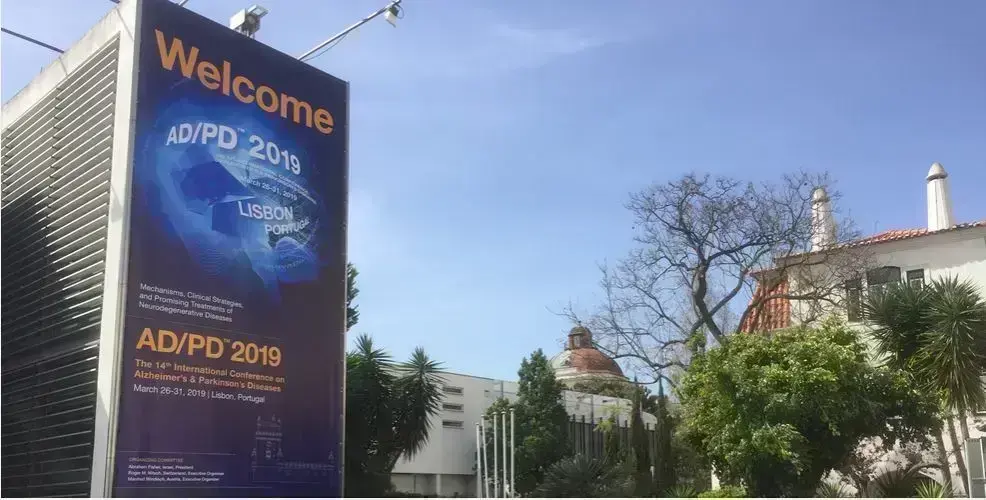In all affected brain regions, α-synuclein accumulates only in specific cell types, and only in certain cells. Not all neurons are vulnerable to Lewy pathology; and not all glia accumulate α-synuclein. Factors determining the selective nature of neural degeneration are central to the better understanding of Parkinson’s disease and other synucleinopathies.
알파 시누클레인(α-synuclein)은 여러 뇌 부위에 존재하지만, 이 중 특정 유형의 특정 세포에만 축적됩니다. 모든 뉴런이 루이소체에 취약한 것은 아니며, 모든 교세포에 알파 시누클레인이 축적되는 것이 아닙니다. 뉴런 퇴행의 선별적 특성을 결정하는 인자는 파킨슨 병과 다른 시뉴클레인병증들(synucleinopathies)을 더 명확히 이해하는 데 필요한 핵심 요소입니다.
Some cells never accumulate α-synuclein though surrounding cells do. This is one of the paradoxes of Parkinson’s disease (PD). Even with end-stage disease, and even in the substantia nigra, not all neurons are affected by α-synuclein deposition. Across the brain, the proportion of targeted cells affected may be as low as 5-15%.
일부 세포에는 주변 세포와 달리 알파 시누클레인이 전혀 축적되지 않기도 합니다. 이는 파킨슨병의 몇 가지 역설 중 하나입니다. 심지어 파킨슨병 말기에 흑질(substantia nigra)에도 알파 시누클레인 축적의 영향을 받지 않는 뉴런이 존재합니다. 뇌 전체에서 타깃이 되는 세포의 비율은 5~15% 수준으로 낮은 편입니다.
We don’t yet understand why this is the case but it must reflect differences in vulnerability, Glenda Halliday from Brain and Mind Center, University of Sydney, Australia, told a plenary session of ADPD 2019.
이번 ADPD 2019 총회에서 호주 시드니대학교 뇌정신센터(Brain and Mind Center)의 글렌다 헐리데이(Glenda Halliday) 교수는 “이러한 현상에 대한 원인은 아직 파악하지 못했으나, 취약성의 차이를 반영하고 있다.”고 말했습니다.
More glia than neurons accumulate α-synuclein. Immune-related receptors may be involved
알파 시누클레인은 뉴런보다 교세포에 더 많이 축적되며, 면역 관련 수용체가 연관되어 있을 수 있습니다
Pathways to progression
병리의 경과
Lewy bodies are only part of the pathology, and aberrant α-synuclein is not the only protein involved. But the fact that Lewy body inclusions are found in the majority of people with PD, and the fact that α-synuclein is the main constituent of their core fibrils, put it clearly in the frame. And we now start understanding reasonably well how Lewy bodies arise.
루이소체는 병리의 일부일 뿐이며, 알파 시뉴클레인이 이와 관련된 유일한 단백질인 것도 아닙니다. 그러나 파킨슨병 환자 대다수에게서 루이소체가 발견되고, 이들 환자의 핵심 섬유조직의 주요 구성 요소가 알파 시누클레인이라는 사실을 보면 루이소체가 분명 질환과 관련이 있음을 알 수 있습니다. 그리고 이제 학계에서도 루이소체가 어떻게 발생하는지 어느 정도 이해하기 시작했습니다.
The process begins when α-synuclein forms punctate material. This comes together to form loose filaments and eventually becomes compacted. The average duration of the process may be ten or more years. It is accompanied by increased phosphorylation of α-synuclein, and an increase in the membrane-bound rather than the soluble form. Protein ubiquitination is present, but this does not lead to degradation. There is also the turning on of immune signals, such as the expression of Toll-Like Receptor 2 (TLR2), indicating an inflammatory response of the innate immune system.1
루이소체의 발생은 알파 시누클레인이 점상의 물질(punctate material)을 형성하면서 시작됩니다. 이와 함께 필라멘트도 성글게 형성되어 점차 치밀한 구조로 변합니다. 이 과정에 소요되는 평균 기간은 10년 이상입니다. 루이소체가 발생함에 따라 알파 시누클레인의 인산화가 증가하는데, 이러한 인산화는 수용성 형태보다는 막 결합(membrane-bound) 형태로 이루어집니다. 단백질 유비퀴틴화(ubiquitination)가 일어나지만, 이로 인해 분해되지는 않습니다. 또한 Toll-Like Receptor 2(TLR2)의 발현과 같은 면역 징후가 발생하기도 하는데, 이는 선천 면역 시스템(innate immune system)의 염증 반응을 의미합니다.1
In multiple system atrophy (MSA), although clinical disease progresses at a faster pace, the formation of the characteristic oligodendrocytes cytoplasmic inclusions (CGIs) also occurs over a prolonged period.
다계통위축증(MSA)의 경우 임상적 질환은 빠른 속도로 진행되지만, 특징적 희소돌기아교세포 세포질(CGIs, characteristic oligodendrocytes cytoplasmic inclusions)은 장기적 기간에 걸쳐 형성됩니다.
It has not been widely recognized, but – in the synucleinopathies – it seems that more glia are involved than neurons, and they are involved from the outset. So glial function is likely to be important, and inflammation is increasingly seen as a crucial element in these diseases.
아직 널리 알려지지 않은 사실이지만, 시뉴클레인병증은 뉴런보다 교세포와 더 밀접한 연관이 있으며 이미 발병 단계에서부터 교세포가 관여하는 것으로 보입니다. 따라서 교세포 기능이 중요할 수 있으며, 염증이 퇴행성 신경 질환의 중대 요소로 점차 주목 받고 있습니다.
Lewy body formation is accompanied by dysfunction in lysosomes and autophagy
루이소체의 형성은 리소좀 및 자가 포식 기능 장애를 수반합니다
Lewy bodies spread
루이소체의 확산
With time, more brain regions become involved. This is no longer controversial, though the sequence in which areas become affected may vary between synucleinopathies and be reflected in clinically different phenotypes even within PD. A limbic-dominant form, with spread via the olfactory bulb, has been proposed as an alternative to the classical Braak pattern of disease ascending from the brainstem.2
시뉴클레인병증 유형에 따라 영향을 받게 되는 영역의 순서가 다를 수 있고, 이러한 순서가 동일한 파킨슨병 환자들 사이에도 임상적으로 상이한 표현형(phenotype)으로 반영될 수 있지만, 시간이 경과함에 따라 영향을 받는 뇌 부위가 점차 넓어진다는 것은 명확한 사실입니다. 뇌간에서 발생하는 질환의 전형적인 브락(Braak) 패턴의 대안으로서 변연계에 지배적으로 형성되어 후각 신경구를 통해 퍼져나가는 형태가 제시되어 왔습니다.2
The Lewy bodies spreading was unequivocally demonstrated by the fact that embryonic dopamine neurons transplanted into the brains of people with PD develop Lewy pathology after around ten years.3 The pathology is probably passed cell to cell. We know that α-synuclein can be released from neurons by mechanisms such as exocytosis and through exosomes, but the mechanisms of uptake, and the amount that needs to be present to achieve transmission, remain unclear.
파킨슨병 환자의 뇌에 배아 도파민 뉴런을 이식하면 약 10년 뒤 이 세포에서 루이 병리가 발현한다는 사실을 바탕으로 루이소체의 확산은 명백히 입증되었습니다.3 루이 병리는 아마도 세포에서 세포로 퍼져나가는 방법일 것입니다. 알파 시누클레인이 세포외배출과 같은 메커니즘에 의해, 그리고 엑소좀을 통해 뉴런에서 방출될 수 있다는 사실은 잘 알려져 있습니다. 그러나 흡수 메커니즘과 전이에 필요한 양은 아직 명확하지 않습니다.
Whether spread is facilitated by an increase in vulnerability factors across the brain is also an open question. The possibility that glymphatic system dysfunction is involved in propagation deserves greater attention.
또한 취약성 인자들이 뇌 전반에서 증가함에 따라 루이소체의 확산이 촉진되는지 여부도 아직 알 수 없습니다. 글림프 시스템 기능 장애의 루이소체 확산에 대한 연관 가능성에도 좀 더 많은 주목이 필요합니다.
A further lesson from the brain is that forms of α-synuclein, particularly differences in solubility, really matter. They are different in MSA and PD; and we need to better understand the nature of the modifying factors.
뇌를 통해 알게 되는 또 다른 사실은 알파 시누클레인의 형태, 특히 용해성의 차이가 매우 중요하다는 점입니다. 이 요인들은 다계통위축증과 파킨슨병에서 각각 다르게 나타나므로, 변경 요인의 특성을 더 자세히 이해할 필요가 있습니다.
본 자료는 Global Lundbeck 의학부에서 선별한 콘텐츠이며, 한국룬드벡의 의견과 다를 수 있습니다




